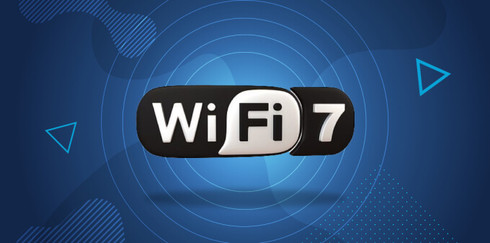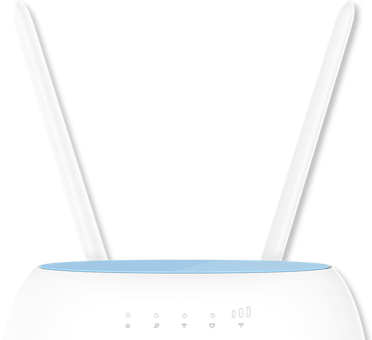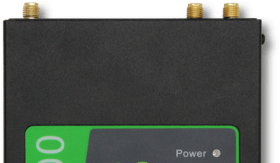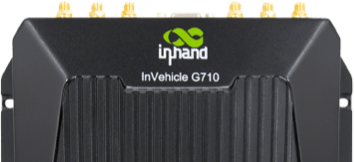What is WiFi 7? All You Need to Know
Next Gen WiFi: IEEE 802.11be
The wireless connectivity standards have revolutionized our communication and continually defined how we access information. In January 2024 a new WiFi standard was released, featuring major technological advancements.
Keep reading to find out how WiFi 7 will impact digital communication and improve our access to information. Let’s dive in!
Installers and Integrators
Take advantage of our system design and installation services. Learn more or call us for a free consultation: 1-800-969-8189
What is WiFi 7 and How Does it Work?
WiFi 7 (IEEE 802.11be) is the latest WiFi standard, designed to deliver faster speeds and lower latency than ever before. This advancement significantly enhances internet connectivity and sets the stage for advanced applications such as immersive AR/VR, streaming 8K videos, and the like.
To understand how Wi-Fi 7 works, we broke down its key technologies:
WiFi 7 Supports Multiple Bands
The WiFi 7 standard supports 2.4 GHz, 5 GHz, and 6 GHz, introducing the less crowded 6 GHz spectrum which is critical in ensuring reduced interference and better network performance.
4K QAM (Quadrature Amplitude Modulation)
4K QAM is an advanced system designed to improve WiFi 7 modulation accuracy and increase data transmission rates by 20% compared to WiFi 6 performance. Essentially, 4K QAM achieves this by packing more data into each signal using higher amplitude levels and phase variations. This approach enables WiFi 7-supported devices to transmit more information within the same time as their predecessors.
Preamble Puncturing Technique
Preamble puncturing is a WiFi 7 feature that helps improve spectrum efficiency and WiFi channel bandwidth by isolating and removing portions of a spectrum.
In WiFi 6 and WiFi 5, interference on a WiFi channel prevents transmissions from using the remaining spectrum.
However, in Wi-Fi 7, preamble puncturing allows devices to maximize the entire channel regardless of interference. In dense deployments, the preamble puncturing technique helps to manage overlapping basic service sets.
Multi-Link Operation (MLO)
MLO mode enables devices to manage WiFi connections on multiple channels or frequencies at the MAC layer, allowing WiFi 7 devices to improve network throughput and reduce latency.
What Are the Advantages of WiFi 7?
Now that you have a better understanding of what WiFi 7 is and how it works, is WiFi 7 worth it? To answer this question, here is what you can expect from the new WiFi standard.
Faster Connectivity Speeds
WiFi 7 speeds significantly surpass that of WiFi 6. It delivers a higher bandwidth capacity transmitting data at up to 46 Gbps, compared to WiFi 6’s 9.6 Gbps. That’s 5 times faster.
Lower Latency
WiFi 7 delivers less delay compared to WiFi 6, making it a better option for online video gaming and video conferencing. Its multi-band support ensures more coordinated beamforming and takes into account time-sensitive networking.
Expanded Capacity
We have seen that Wi-Fi 7 uses the 6 GHz band and wider 320 MHz channels, providing more spectrum and minimal interference.
Moreover, it doubles the number of MIMO streams from 8 to 16, allowing each device enough bandwidth for extended capacity.
Supports Simultaneous Communication
The WiFi 7 Multi-Link Operation feature lets the devices simultaneously send and receive data across multiple WiFi links and frequency bands.
This improves performance for applications requiring low latency, high bandwidth, and low power. In addition, the MLO technology increases reliability by providing additional opportunities to mitigate interference through an efficient link-switching capability.
Better Connectivity
WiFi 7 effectively mitigates network congestion and interference. Therefore, the WiFi standard improves connectivity in areas with multiple devices and overlapping networks, such as airports, shopping malls, and office blocks.
Thanks to the advanced technologies, WiFi 7 speeds are impressive. Overall, WiFi 7 access points deliver higher aggregate speeds and reduced congestion.
More Stable Coverage
WiFi 7 range is similar to that of previous WiFi standards. Signal range is determined by the frequencies used. However, because of its advanced technologies connected WiFi 7 devices will receive and maintain a more stable, fast connection throughout.
WiFi 7 vs WiFi 6e vs WiFi 6?
While WiFi 6 and WiFi 6e provided significant internet connectivity improvements, the Wi-Fi 7 takes it to the next level. This table compares the three standards based on different features.
| Feature/Aspect | WiFi 6 (802.11ax) | WiFi 6e (802.11ax) | WiFi 7 (802.11be) |
| Frequency Bands | 2.4 GHz, 5 GHz | 2.4 GHz, 5 GHz, 6 GHz | 2.4 GHz, 5 GHz, 6 GHz |
| Maximum Theoretical Speed | Up to 9.6 Gbps | Up to 9.6 Gbps | Up to 46 Gbps |
| Channel Width | 20,40,80,160 MHZ | 20,40,80,160 MHZ | 20,40,80,160, 320 MHZ |
| Modulation | 1024-QAM | 1024-QAM | 4096-QAM |
| OFDMA | Yes | Yes | Enhanced OFDMA |
| MU-MIMO | Yes | Yes | Yes |
| Multi-Link Operation (MLO) | No | No | Yes |
| Latency | Low | Low | Ultra-Low |
| Primary use cases | General consumer, IoT | General consumer, IoT, AR/VR | AR/VR, 8K streaming, Advanced IoT. |
The WiFi 7 standard delivers a theoretical speed of up to 46 Gbps thanks to its wider channels and the higher modulation of 4096-QAM.
For greater throughput, WiFi 7 has 320 MHz channels, which is double the number of channels in WiFi 6e and WiFi 6. Besides, for additional performance and more excellent reliability, WiFi 7 introduces MLO, which allows devices to connect on multiple bands simultaneously.
Finally, WiFi 7 targets ultra-low latency scenarios like AR/VR and 8K streaming.
What Devices Support WiFi 7?
Some notable WiFi 7 devices include:
- Samsung Galaxy S23 Ultra
- Xiaomi 13 Pro
- Lenovo Legion Slim 7
- TP-Link Deco BE85 Mesh Router
- Nighthawk Tri-Band WiFi 7 Router
We anticipate that the best WiFi 7 devices will continue to become more widespread within the year.
Where Can I Use WiFi 7?
WiFi 7 standards offer a high-level improvement over the predecessors and can be highly beneficial for the following applications:
Outdoor WiFi Networks
Outdoor WiFi 7 access points are ideal for stadiums, school campuses, libraries, public venues, parks, and smart cities. They’re able to handle great capacity, improve data transmission, and minimize interference issues. Our tailored outdoor WiFi services can improve connectivity where you need it.
VR/AR Applications
WiFi 7 supports ultra-low latency and high throughput, which are crucial for AR, VR, and XR applications that require real-time data transmission for a smooth and immersive experience.
8K Video Streaming
Streaming 8K content requires substantial bandwidth. WiFi 7 supports 320 MHz channels and 4K-QAM modulation so that it can handle high data rates for ultra-HD definition content streaming.
Gaming
Competitive and cloud gaming require high-speed, low-latency connections. WiFi 7’s improvements in speed and latency make it ideal for these services.
Do I Need To Upgrade To WiFi 7?
WiFi 7 offers a remarkable improvement in wireless communication in terms of higher speeds, efficient data handling, and overall performance. Its advanced technologies make it ideal for AR/VR, industrial internet, online gaming, and other applications where minimal lag is critical. Not only will the upgrade to Wi-Fi 7 prepare you for the future of digital demands, but it will also help you stay ahead in the fast-evolving communication landscape.
However, it’s worth noting that WiFi 7 might be more than necessary for some settings. For instance, homes or offices where the internet is mainly used for basic tasks like browsing, email, and streaming on a few devices. If this is you, a more affordable WiFi 6 or WiFi 5 router is enough. And, if you don’t want to be tied down to a wired broadband provider, we offer high-performing cellular routers.
Interested in Learning More? Check Out Our Cellular Info Hub / WiFi Info Hub








